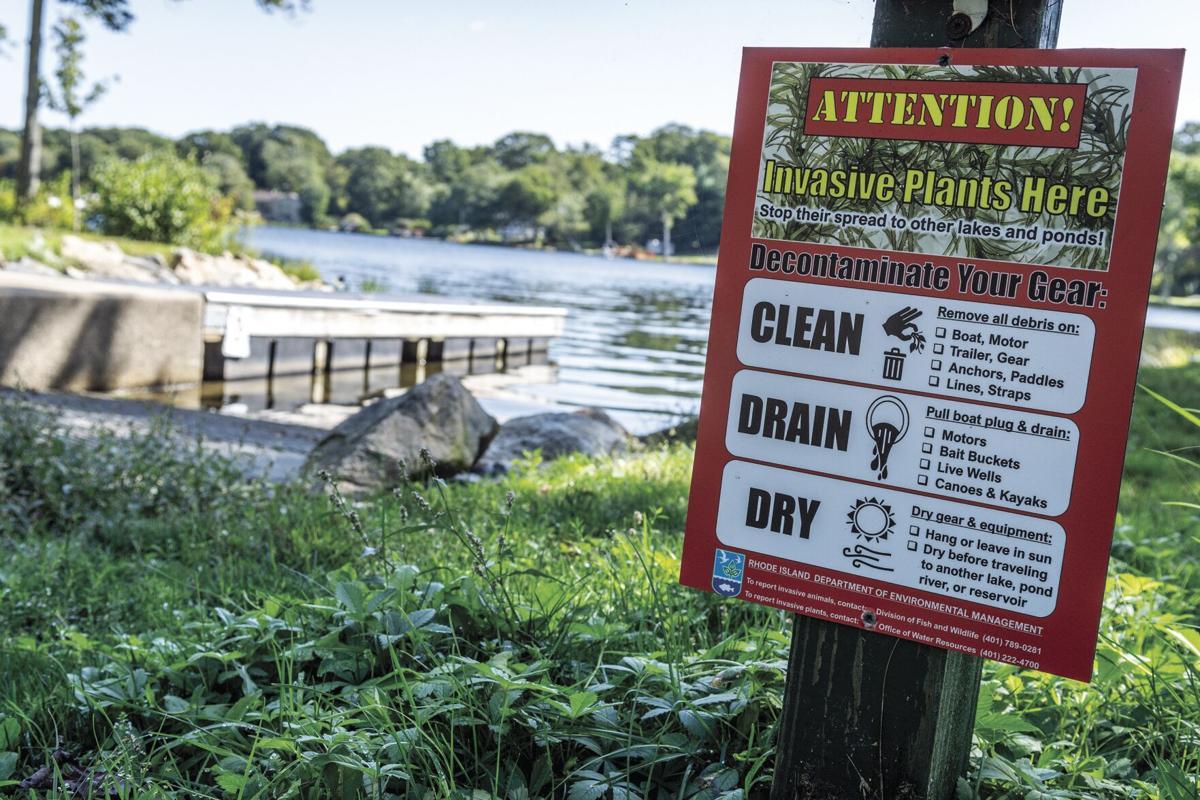Potentially harmful blue-green algae and an invasive aquatic plant have been found in South Kingston’s Indian Lake, a spring and summer recreation destination.
Blue-green algae, also known as cyanobacteria, is a single-celled photosynthetic organism that is capable of producing toxins in certain conditions. Sometimes blue-green algae “blooms” or experiences accelerated growth. These blooms can have several harmful environmental effects. They use up nutrients and prevent sunlight from reaching the booth of bodies of water which can out compete other plant life. Algae blooms are a form of pollution, said Elizabeth Herron, the coordinator of the University of Rhode Island Watershed Watch Program.
The Rhode Island Department of Environmental Management put out an advisory warning in November 2023 about potentially harmful blue-green algae at several lakes ranging from Providence to Washington County. In December 2023 the Washington County locations had their advisory lifted but ponds in Providence and Cranston are still under an advisory for the organism.
Many of these bodies of water have waterfronts that are frequented by pedestrians, and are popular places to walk pets. With an algae bloom, if a pet drinks the water, there is a danger of toxins being concentrated and causing sickness, Herron said.
URI Watershed Watch observed hydrilla present in Indian Lake, Worden Pond and Mishnock Lake. Hydrilla is an aquatic plant native to Southeast Asia and Australia and has become an invasive species due to its prevalence in the freshwater tanks. It can choke up a lake, spread easily to other water bodies and impact recreational practices, such as swimming and fishing, two things that are done in the warmer months at Indian Lake, Herron said.
“There has been some really disturbing research down south showing that there is a particular form of cyanobacteria that lives on hydrilla that is capable of producing a neurotoxin,” Herron said.
There is no evidence to support a linkage yet between the two issues in Rhode Island as blue-green algae is present in many systems without hydrilla, but the URI Watershed Watch Program is still monitoring the situation and collecting data.
Species and bloom monitoring is a major goal of the URI Watershed Watch Program, Herron said. She works with URI staff and students, government agencies, such as the DEM, and citizen scientists to collect this monitoring data.
“We try to get our bacteria data up as quickly as possible,” Herron said.
The URI Watershed Watch Program has existed for over 30 years and believes that climate may be a factor in an increase in blooms, she said. Researchers from across the globe can access this data for their studies and use it as a basis for findings going into the future.
“Our program helps build baseline information by having a local sponsor committee for 10 years of monitoring,” Herron said.
It takes a long time to remove outliers and year-by-year changes to find long-term changes and continuity, Herron said.
If you want to stay informed about your local waterways go to https://cyanos.org/ for more information. To keep in touch with URI’s Watershed Watch Program, monitor findings and sign up to be a volunteer citizen scientist, go to https://web.uri.edu/watershedwatch/ .

